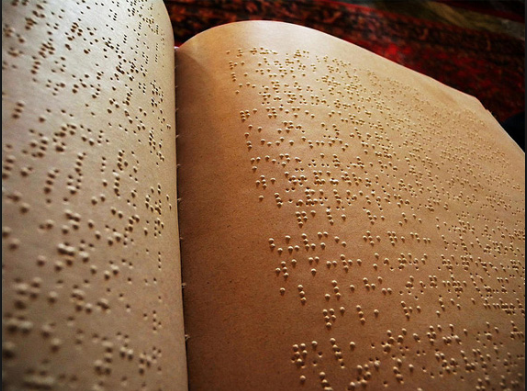Marrakesh Treaty to Facilitate Access to Published Works for Persons Who Are Blind, Visually Impaired, or Otherwise Print Disabled
Contents
What is the goal of the Marrakesh Treaty?The goal of the Treaty is to help to end the book famine faced by people who are blind, visually impaired or otherwise print disabled.Currently, only some 1-7 percent of the world’s published books ever make it into accessible formats.This is partly due to access barriers in copyright law.The treaty helps in removing these barriers in two main ways.Relevant Articles of the TreatyThe Treaty and IndiaConclusion
What is the goal of the Marrakesh Treaty?
-
The goal of the Treaty is to help to end the book famine faced by people who are blind, visually impaired or otherwise print disabled.
-
Currently, only some 1-7 percent of the world’s published books ever make it into accessible formats.
-
This is partly due to access barriers in copyright law.
-
The treaty helps in removing these barriers in two main ways.
- By requiring countries which ratify the Treaty to have an ‘exception to domestic copyright law’ for visually impaired and print disabled people. This means that countries which ratify the Treaty must ensure their laws allow blind people and their organizations to make accessible format books without the need to seek permission first from the holder of copyright.
- By allowing for ‘import and export’ of accessible versions of books and other copyrighted works, again without the permission of the copyright holder. This will help in avoiding the duplication of transcription efforts in different countries, and also allow those with larger collections of accessible books to share these collections with visually impaired people in countries with fewer resources.
- Only so-called “authorized entities”, such as blind people’s organizations, can send accessible books under the terms of the Treaty.
- However, the Treaty allows accessible books to be imported/ received either by other “authorized entities” or directly by visually impaired/ print disabled individuals.
Relevant Articles of the Treaty
- Article 2 – It makes it clear that accessible books sent under the provisions of the Treaty should be solely for the use of “beneficiary persons”. It discourages the reproduction and distribution of unauthorized copies.
- Article 2(a) – It refers to the type of publications which can be transcribed/distributed under the Terms of the Treaty. These are: “literary and artistic works in the form of text, notation and/or related illustrations, whether published or otherwise made publicly available in any media”.
- The definition therefore, covers books, periodicals and other similar textual works as well as sheet music. It does not cover films.
- The Treaty does not allow for the contents of a Work to be changed rather just for the Work’s content to be transcribed into an accessible format.
- Article 2(c) – The “Authorized Entity” is a non-profit or government agency that makes accessible copies of Works, and limits distribution of those copies to people with genuine disabilities. It also covers for-profit entities that provide services to beneficiary persons using public funds and on a not-for-profit basis.
- Article 3 – Beneficiary persons are those who have any disability that interferes with the effective reading of printed material. it includes people who are bind, visually impaired, dyslexic, or have a physical disability that gets in the way of effectively holding a book, turning pages or focusing on the page.
- Article 4 – It requires countries which ratify the Treaty to have an ‘exception to domestic copyright law’ for visually impaired and print disabled people.
- Article 5&6 – It permits the cross-border exchange of accessible format books.
The Treaty and India
- The Indian Copyright Act of 1957 did not have any provision to facilitate the production and distribution of books in formats that are accessible to print-impaired readers.
- While the practice of converting books into Braille for the visually impaired exists in this country, not enough is done to create audiobooks or e-formats with speech enabled texts for readers, who may be dyslexic or have other difficulties in reading print books.
- In June 2014, India became the first nation to ratify the Treaty.
- Unlike most public policies that look great on paper but take ages to get implemented, this one has already seen the light of the day.
- In August 2016, India launched Sugamya Pustakalaya, which is the largest collection of online accessible books available in the country.
Conclusion
- The Marrakesh Treaty will have a huge impact on accessibility for people with print disabilities.
- It will promote both the domestic production of accessible materials in each country, and provide access to books produced elsewhere.
- This will be important for books in languages that cross national boundaries like English, Spanish, French, Portugese, Russian, Chinese, Bangla and so on.
- It will be important for countries that haven’t traditionally had robust services for people with disabilities. These less wealthy countries will benefit greatly from access to the extensive collections developed in wealthier and larger countries.
- The Marrakesh Treaty provides a crucial legal framework for adoption of national copyright exceptions in countries that lack them and creates an international export/import regime for the exchange of accessible books across borders.
- Non-profit organizations, libraries, educational institutions and governments need to take advantage of these provisions to actually deliver the accessible books people with disabilities need for education, employment and full social inclusion











